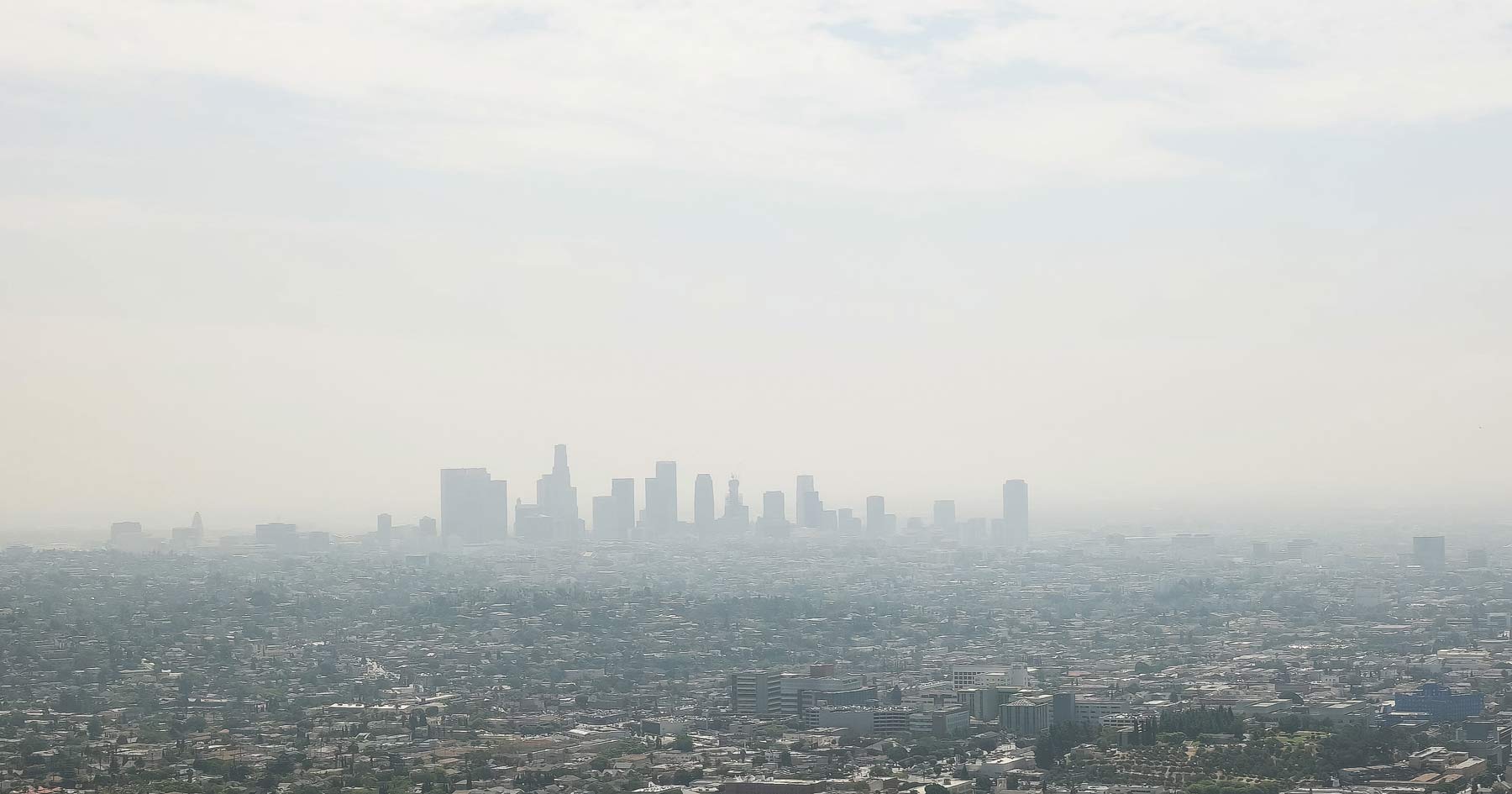
In the run up to Copenhagen and the debate over Waxman-Markey, I think it’s worth laying out some of the key debating points on how cap and trade works and why it’s been our weapon of choice to date in the climate change fight.
I like to think of our carbon and energy problem as follows
We built the first industrial economies and long term economic growth model in all of human history in the last 200 years on a cheap, available energy base, in part by effectively running down our existing inventories of energy stocks from the least cost to the most expensive. We now need a lot more inventory each year (since we’ve been successful and are a lot bigger), and we’re into the expensive layer of our inventory, so it’s hitting our global cost of goods heavier than before. And we know we need to find more sources to replenish inventories, and we know that if we move immediately to higher cost sources we’ll pay the price in GDP.
We also know that producing and using those inventories had a non zero (and we argue about the level) cost to our environment that we have not measured well, but have been working on reducing for the last three decades. But we’ve now run into a new part of that cost with carbon or GHGs that’s very large, and is going to take a much larger and bigger hit to take care of, and depending on your view, has an aggressive time fuse on it. Essentially this means pricing carbon into our economy, which will basically add a whole new cost in all of our supply chains, a cost that varies from country to country and industry to industry, and will shake up comparative advantage in trade. And because it’s global, as far as the environment is concerned, for carbon, unlike most environmental pollutants, it doesn’t matter where in the world it’s emitted or reduced. So our problem is China’s problem is Europe’s problem is our problem.
So we start with a first climate change goal:
To reduce the carbon emissions levels in the economy, by a level that we all debate by a point in time that we all debate. But we have to realize that while we do this, we do need to replace those energy supply inventories to both keep us where we are in GDP, and find new ones to sustain growth, or we’ll solve our GHG problem simply by being really poor. And we have to remember that adding costs has to be paid for, and it isn’t “business” that pays for it, it’s us, with business as our proxy.
So my corollary is the goal should be to squeeze carbon emissions out of the global economy in the fastest, least cost path, and as fairly as possible. Sorting out what that means and how to do so is the rub. But part of fair should mean a “do no harm” principal for the economy as well as the environment – meaning that when we start, as far as possible no country or group or industry or company within industries gets penalized out of the gate without either compensation or enough time to adjust. Think of it like eminent domain. If we give something up to the greater good, we deserve to get paid for it.
We have two main ways to go about it, place a tax or penalty on the emissions, or constrain the emissions factors (like power generation, driving, etc.) Cap and trade is essentially a hybrid of the two. The cost of such carbon reduction, because of the ubiquitous nature of carbon, and typically inelastic demand curves for most energy and carbon intensive products, is spread across all consumers in any scenario, but depending on system design can be borne disproportionately by some groups, industries or countries. Our special challenge is because of that global nature, we literally HAVE to have a solution that can engage and work in every country. Unlike cleaning up a local toxic spill, where we can fix ours without our trading partners, in carbon, if China fails, we fail. So if we try and succeed, and China does not try, the environment loses, and we lose worse.
Carbon Tax
Basically with carbon tax the government picks a series of carbon intensive industries or products, assigns a carbon value to them by one of a number of methods, and levies a tax on them. It’s often touted by economists as theoretically the cheapest method, and generally an industry favorite because they know how much they’ll have to pay and can plan.
But carbon taxes have big drawbacks. You can’t be sure you’ll actually get the level of reductions you want, because the tax fixes price, not volume. Worse, carbon is a global problem, and getting global tax codes to mesh together is virtually impossible (we can’t even do it inside the US), which means we may end up with everybody paying a different price of carbon and a complete mess. That certainly would throw the efficiency argument out the window. The next big disadvantage is that if you don’t get the tax level and structure exactly right, businesses and consumers get hurt in unpredictable ways, and have little room to adjust if we get it wrong. So while theoretically better, it’s not a very “fault tolerant” plan.
Main advantage is that you have a known cost to industry (which is why most industry prefers tax to trade or command and control). Next main advantage is that the the government gets lots and lots of revenue, which is why many politicians favor it.
The second option is classic environmental “command and control”, if you’ll excuse the perjorative sounding nature of that term. Esstentially the EPA or equivalent simply regulates every one who produces GHGs, and tells them how much they can produce through a permitting process.
The advantage is that you know exactly how much emissions reduction you are going to get. The disadvantage is that you may pay much more than you thought, and sink your economy, especially if your trading partners are more lax on either regulation or enforcement, and you let the EPA pick the winners and losers. The other disadvantage is that there is no upside. Under no circumstances will you ever get more reductions than you thought, unlike cap and trade, where done right, you may.
Cap and trade is the middle ground (which is why it keeps coming up). With cap and trade, the system operator (UN, EU, EPA, CARB etc) designates how many credits can enter the system, and prints, them like money. It then designates how many credits a company must turn in each year or period per unit of production (ie 0.5 tons/MWH of power produced), and penalizes or shuts down the company if they don’t turn in enough to meet their obligation. So no more emissions from a regulated sector will occur than credits (often called allowances) exist.
Then the regulator decides whether to sell the credits to the industry that needs them, or to simply allocate them (often based on some measure of current production). Both methods have pros and cons, and in practice have nothing to do with environmental protection or the price of carbon (the total level of credits and the relative level of credits to demand sets that) and more with subsidizing one industry vs another, or collecting revenue for the government.
Finally, the regulator can let offset credits be produced from the remaining unregulated sectors (or from inside a regulated or “capped” sector if appropriate adjustments are made), and sold to the emitters (it simply adjusts the cap so that the total level is where we want it to be). The advantage of this is that the regulations can be phased in easier, and we get a more equal price of carbon.
And what happens is that in unregulated sectors any time potential reductions exist (eg, a very inefficient emitter that could be shut down or run more efficiently), carbon developers pay up for the rights to the reduction, and that emitter finds it’s more profitable to do the right thing. The downside is that it looks like emitters are getting a profit off emissions. In reality, they are getting paid to reduce emissions for you and I, at just the right price.
Then emitters and financial parties buy and sell these credits from the government or each other or develop offset credits in a race to pay the least. And since the regulator starts reducing the number of credits it puts into the system, it’s kind of like musical chairs, the slowest, most carbon inefficient company gets left out and has to shut down, or shifts to a lower carbon production in order to stay in business.
The main advantages of cap and trade
1) it assures us that we will meet our target goals like command and control 2) but it allows industry the flexibility to figure how to meet them cheapest (which is good for all of us), 3) it tells us what the real price (or cost) of carbon actually is, 4) and it’s better at equalizing the price of carbon so everyone pays the same across different industries and geographies, 5) in practice it costs less, and is easier to implement in a multicountry environment than command and control or tax.
Main disadvantages, it takes some time to get up and running, and makes it look like (not really true) emitters are making money off it. Trust me, if they thought it was a profit center, they’d be all over it. The final disadvantage is it depends on the government operator to manage a market, something where we’ve had some good success (like NOX and SOX trading and up until recently the Fed), but can be susceptible to politics as usual.
In essence, you can think of cap and trade as a carbon tax with a tax rate that varies with the market (going up if industry is worse at producing carbon reductions than the government thought and down if they are better, and similiarly going down when the economy is bad and we can’t afford it and up when the economy is strong) and a tax base that is higher for emitters and emissions intensive industries than for those more efficient.
In any case, all three options need a lot of money spent on new technology and good measurement and verification. All three options will be expensive, and will be paid for by you and I at some point. And in practice, we are doing all three options to varying degrees right now.
Energy is Life.
The Rest is Just Details.
Share this Post

